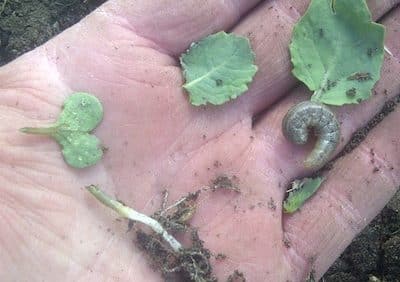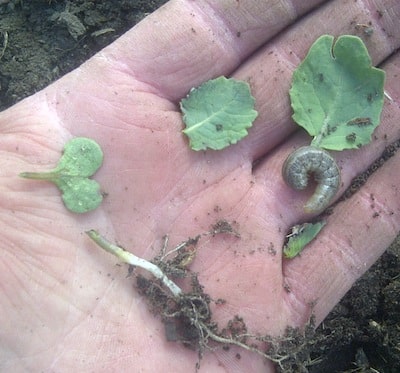Growers will learn a lot from two field checks during the first few weeks after emergence.
An early peek. Scout fields 5 to 10 days after seeding when canola starts to emerge. Look for gaps in the field and dig around these areas to figure out why. Perhaps some drill runs were seeded deeper. Diseases and insects could be factors. (Read “Top 10 things to scout for after emergence.”) Mark scouted areas with flags so you can return to the same spot the second time around. When doing a population survey, go to several sites to get an accurate average.
Round two. Scout again two to three weeks after seeding. At this stage, all plants that are going to emerge and contribute to yield have emerged. This is when to assess the stand to see if there are enough plants. How to do a plant count. The ideal stand has 7 to 10 per square foot, with a minimum 5 to reach yield potential. This is when you compare the plant stand to the notes taken at seeding time to see whether targets where hit, and if not, why not. Commit to a post-harvest plant count as well to determine how many actually made it into the combine.
During that second scout, also look for weeds. Assess pre-seed burnoff results, and look for escapes. One weed to watch for is kochia. It takes 14-21 days after a pre-seed glyphosate application for glyphosate-resistant kochia to become obvious. Any kochia plants growing where all other kochia weeds have been controlled could mean resistance.
This is also a good time to rate the seeding operation. Look at the patterns the seeder left, and see if there’s anything such as packing, consistency from row to row, and residue penetration that should be fixed for next year.
Click here for a list of items to have in your scouting toolkit.
Click here for the scouting calendar.

